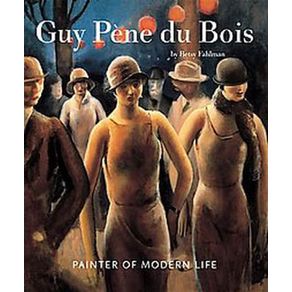Guy Pène du Bois (1884-1958) was one of America's most stylish painters, a keen observer of the social scene around him who deftly captured the sophisticated spirit of the 1920s and 1930s with a wit both subtle and effective. He found his subjects wherever people gathered - at cafés, at the opera, in the public gardens. It was during the 1920s that he achieved the painting style for which he is best known. By the end of the 1940s, the artist, once part of a rebel art movement, had become part of the old guard, dismissing the rise of the New York School as incomprehensible and without lasting substance. Yet, he remains one of the most articulate interpreters of the tradition of urban realism. In this book Betsy Fahlman traces the life of the artist who, like his contemporary, Edward Hopper, did his early work under Robert Henri. And like Hopper, he spent in time Paris exploring different approaches to his painting. But it is the more stylized and often haunting works, particularly portraits, of his later years for which he is best known.



